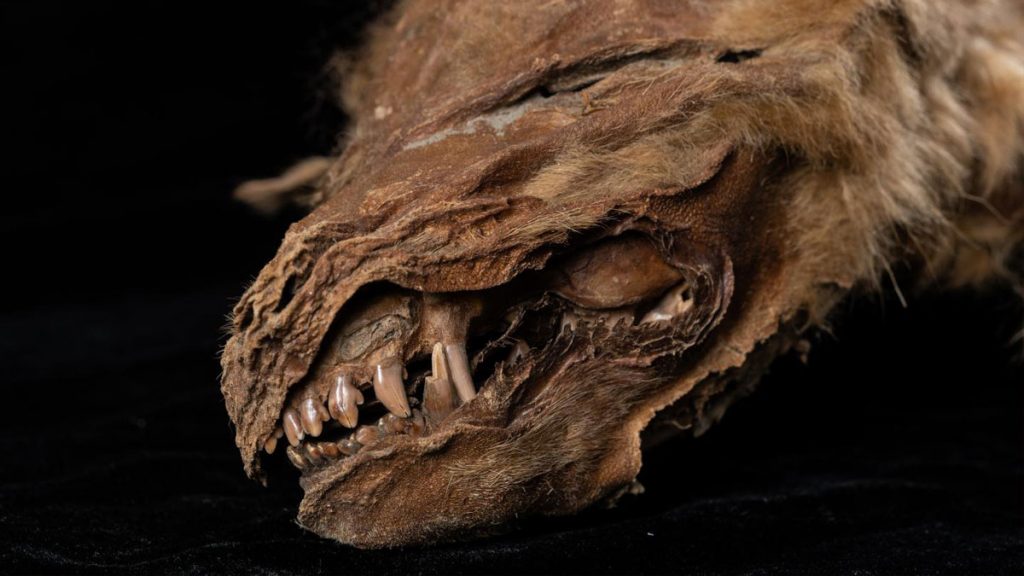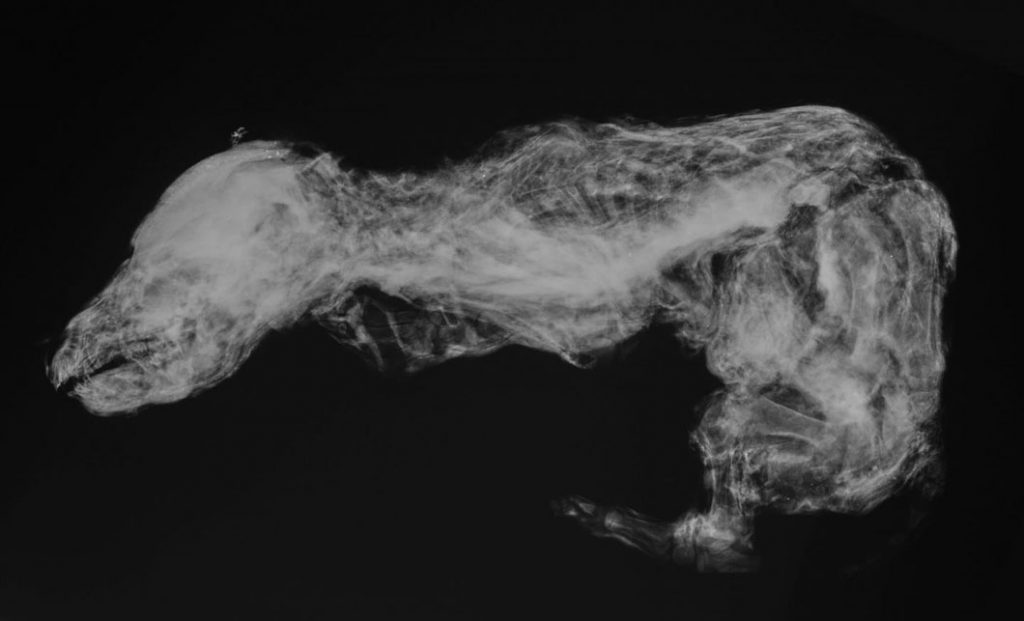
Discovered in the Yukon by a gold digger, the remarkably well-preserved mummy of a very young prehistoric wolf had been preserved for tens of thousands of years in the Canadian permafrost.
The most complete wolf mummy ever discovered
Permafrost has an amazing ability to preserve the remains of ancient animals. Mammoth remains containingDNA sufficiently well preserved to allow genetic studies to appear regularly, while an earlier specimen of a prehistoric wolf exhibitedRNA intact, which was thought to deteriorate much faster. Worms that had been frozen for 40,000 years even came back to life when they were reheated and fed.
Featured in the journal Current Biology, the recent discovery of a juvenile wolf specimen in the Canadian northwest is also impressive, due to the excellent state of conservation of its soft tissues (skin, fur, organs, etc.). ” This is the most complete wolf mummy that has ever been found “, Explain Julie meachen, first author of the study. ” She is practically 100% intact, only her eyes are missing. And the fact that she is so complete has allowed us to learn a lot about her life. “
Judging by the development of her teeth and bones, researchers believe this very young Ice Age female, dubbed Zhùr, was about seven weeks old at the time of his death. The isotopes of the contents of his stomach have meanwhile indicated that his diet comes mainly from aquatic sources, salmon apparently being his favorite food.

The excellent state of conservation of Zhùr implies that it was trapped very quickly in the frozen mud. She also appeared to be in good health, suggesting the animal was in her den when the den collapsed, killing her instantly. The researchers were even able to estimate the time of year when this fatal incident occurred: modern wolves ofAlaska usually breed around April and give birth in early summer, which would place the animal’s death in July or August.
A specimen related to the ancestors of modern gray wolves
Analysis of its genome confirmed that it was related to the ancient Beringian and Russian gray wolves, ancestors of all modern gray wolves. However, despite the excellent state of preservation of the animal’s remains, which will soon be exhibited at the Yukon Beringia Interpretation Center in Whitehorse (Canada), some questions will unfortunately remain unanswered.
” We were asked why she was the only wolf found in the den, and what happened to her mother or siblings », Details Meachen. ” It is possible that she was the only little one. Or that the other wolves weren’t in the den during the collapse. Sadly we’ll never know. “
